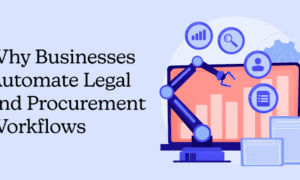In today’s fast-evolving business landscape, selecting the right management framework plays a crucial role in organizational efficiency, agility, and long-term success. Swetha Priya Sathiyam explores this dynamic in her latest research, shedding light on the strategic choices organizations must make between Position Management and Job Management frameworks. This article delves into key innovations in these workforce structuring approaches and their implications for different industries.
The Evolution of Workforce Structuring
Workforce structuring has evolved from rigid hierarchies to more flexible models driven by industry shifts and technology. Position Management ensures stability by defining roles independent of individuals, maintaining continuity and clear authority. In contrast, Job Management emphasizes adaptability, enabling organizations to allocate resources dynamically based on skills and business needs. This shift reflects the balance between structured efficiency and the agility required in modern, fast-changing work environments.
Position Management: A Structured Approach to Workforce Planning
Position Management provides a structured framework for workforce planning, crucial for regulated industries like healthcare and government. It ensures stability, compliance, and smooth leadership transitions through well-defined hierarchies. Advanced position tracking systems enhance resource allocation, succession planning, and competency mapping. By maintaining clear position records, organizations can optimize budgets, track headcount accurately, and ensure critical roles remain filled, fostering operational continuity and strategic workforce management.
Enhancing Organizational Control with Position-Based Frameworks
Position-based frameworks enable organizations to establish stronger control mechanisms, particularly in environments where compliance and reporting structures are critical. Research highlights how organizations implementing structured position hierarchies achieve enhanced performance in leadership management and regulatory adherence.
By emphasizing predefined roles, organizations reduce ambiguity in decision-making, improve accountability, and streamline reporting relationships. This structured approach ensures that operations remain unaffected by personnel changes, reinforcing organizational integrity and efficiency.
Job Management: A Flexible Alternative for Dynamic Environments
Job Management offers a flexible approach for industries facing rapid change, enabling resource allocation based on project needs and evolving skills rather than fixed roles. This model enhances agility, particularly in the software industry. A key innovation is skill-based role assignment, allowing employees to transition between roles as needed. Organizations adopting Job Management report higher project success rates, improved employee satisfaction, and better alignment between workforce capabilities and business goals.
Driving Agility Through Dynamic Role Allocation
Job Management enables rapid adaptation, enhancing flexibility in dynamic industries like tech and startups. Companies using flexible job allocation see faster development, better collaboration, and higher engagement. By prioritizing competencies over fixed roles, organizations drive innovation and responsiveness, keeping their workforce aligned with evolving needs—boosting performance and maintaining a competitive edge in fast-changing markets.
Strategic Decision-Making: Choosing the Right Framework
Choosing between Position Management and Job Management depends on an organization’s structure, industry, and goals. Regulated sectors favor Position Management for stability, while dynamic industries benefit from Job Management’s flexibility. Innovations in management technology enable hybrid models, blending both approaches. AI-driven analytics further enhance decision-making, optimizing workforce strategies for adaptability and compliance.
Implementing Effective Framework Transitions
Effective framework transitions require a structured approach, assessing workforce structures, operational demands, and change management strategies. Stakeholder collaboration ensures alignment with new objectives. A phased implementation with continuous monitoring allows adjustments. Success depends on clear communication, leadership commitment, and technology to streamline integration for a seamless organizational shift.
The Future of Workforce Management
The future of workforce management will be shaped by AI, automation, and data analytics, driving adaptive and flexible frameworks. Businesses will adopt hybrid models that blend Position and Job Management for greater agility without losing structural stability. Emerging trends highlight technology-driven insights enabling real-time role assignments, succession planning, and talent acquisition. These innovations will transform workforce structuring, ensuring organizations stay resilient and competitive in a dynamic global landscape. Adaptive workforce planning will be key to sustaining long-term business success.
In conclusion, Swetha Priya Sathiyam’s research provides valuable insights into the evolving landscape of workforce management. The choice between Position Management and Job Management is not a one-size-fits-all decision but rather a strategic determination based on an organization’s unique needs and industry demands. By leveraging modern innovations in workforce structuring, businesses can achieve a balance between stability and flexibility, positioning themselves for sustained growth and operational excellence.





























